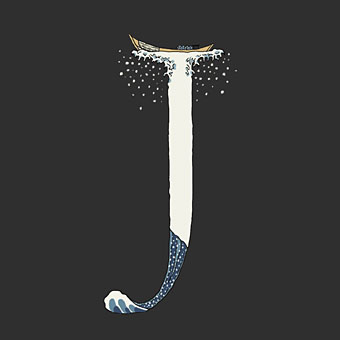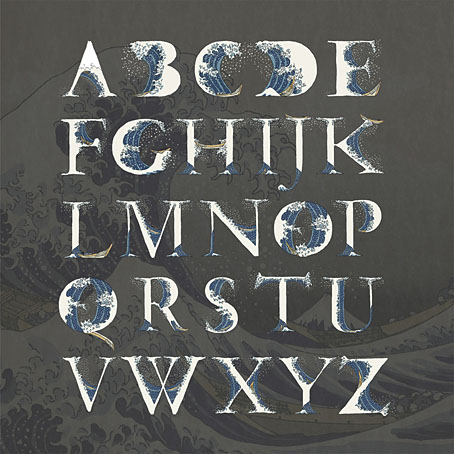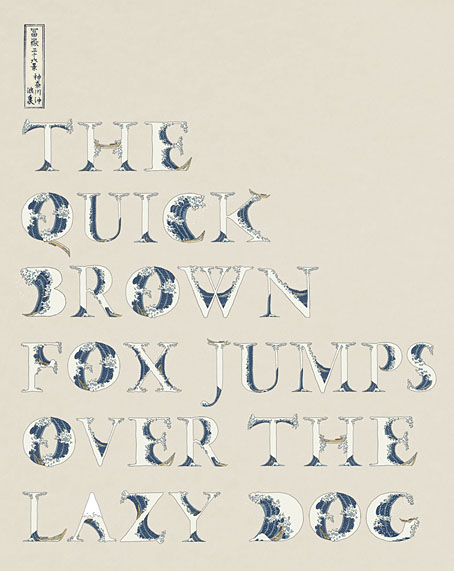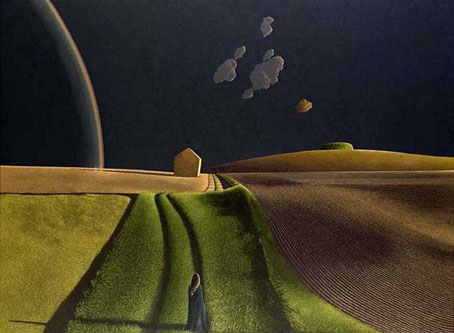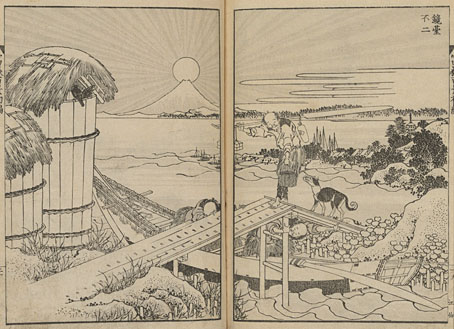
You won’t get all one hundred views here, of course, but all may be seen in their original three-volume printing courtesy of the Smithsonian Library’s Hokusai archive. (See below for the individual book links.) I linked to this cache some time ago but it’s taken me until now to have a proper look at the Hundred Views, rather a shameful admission considering how good they are. In mitigation, this is partly the fault of the Smithsonian Library who insist on labelling all the books with their Japanese titles and no other information. To find the Fuji books you either have to already know the Japanese title (Fugaku Hyakkei), or else look through 82 different uploads to see what they contain.
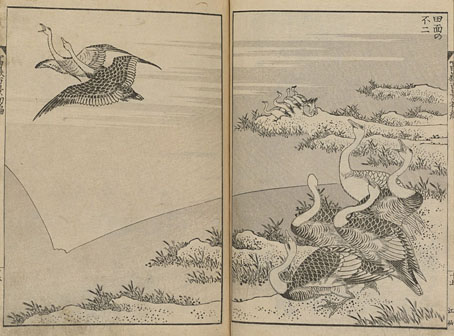
Hokusai’s books differ substantially from his colour prints, even though they use the same woodblock print process, and there’s often an overlap in subject matter, as with the Mount Fuji volumes. Many of the prints are monochrome, using combinations of black lines or dots with grey tones. A few of them also use a second colour, usually a flesh tone, while a handful are fully coloured. The books show greater artistic variety than in Hokusai’s ukiyo-e prints which, being intended for display, were subject to different aesthetic demands. One of the books is dedicated to the artist’s designs for painted combs, for example, while others—the manga series—are sketchbooks that show Hokusai’s invention, his sense of humour and his powers of observation. (The use of manga here shouldn’t be confused with the contemporary term for Japanese comics.)
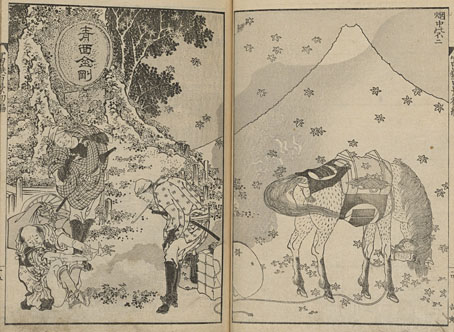
The Hundred views of Mount Fuji are more playful than the famous colour prints of the mountain, being inventions rather than drawings from life. The series is a virtuoso exercise in portraying the sacred volcano in as many ways as possible—silhouette, distant outline, reflection in water—at all times of the year and in all weathers. The views are populated by a wide range of Japanese humanity, from the upper classes to the lowest labourers, as well as a variety of animals: cranes and smaller birds, deer, horses, bats, a dragon, even a spider that seems to catch the mountain in its web. The perspectives also shift from drawing to drawing. There’s no question that Hokusai knew perfectly well how to represent perspectival depth yet his view of a group of astronomers looking at the mountain dispenses with the Western approach to perspective. The three Fuji books were created in the 1830s, at a time when there was no analogue for this type of pictorial experimentation in Western art. I love the formal invention in these drawings, all the ones that show columns of people where every face is obscured by a large hat. I could enthuse at length about so many other details but you should really just go and look at them yourself.
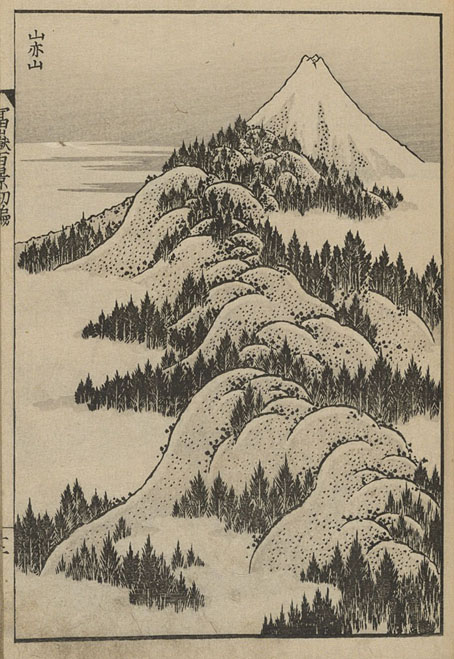
The Smithsonian collection has a couple of sets of Fugaku Hyakkei. The set I’ve chosen has lighter paper which provides better contrast for the printing, especially the grey tones which are often applied with great subtlety.
• Fugaku Hyakkei: Book One | Book Two | Book Three
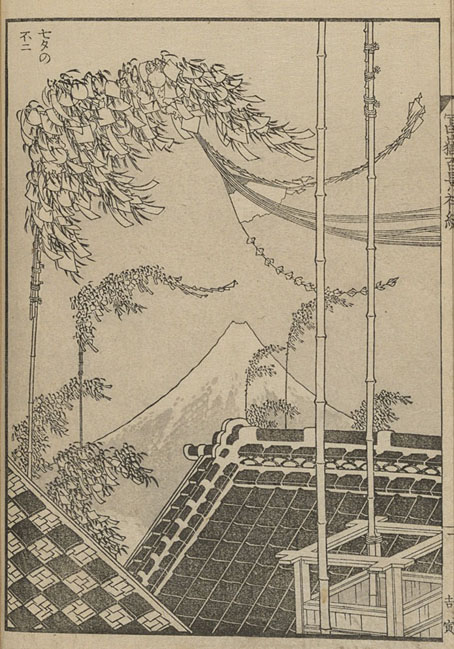
Continue reading “One Hundred Views of Mount Fuji”












